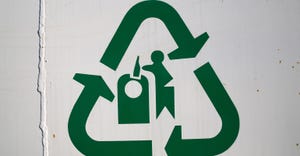January 1, 2004
Michael Fickes
IT'S NO SECRET THAT the success of waste management hinges on the business of transportation and disposal. But business success also depends on pricing waste management services correctly to cover costs. To that end, software and scales have become a technological staple in many operations to increase efficiency. The technology, while not revolutionary, also is essential in helping haulers to monitor existing customers and to price new ones.
Counting Accounts
In Ft. Wayne, Ind., for example, Republic Services Inc. has been using software and scales to audit the pickup weights of its commercial and residential customers for five years. “This is a major component of return on investment,” says Brett Boccabella, branch manager of Republic's National Serv-All Inc. office.
Once a year, a trained auditor, riding shotgun, travels more than 100 routes and visits every commercial and residential customer carried on Ft. Lauderdale, Fla.-based Republic's books in the National Serv-All territory. To facilitate the auditing runs, three of the branch's 14 trucks are equipped with scales. As haulers make their pickups, the auditor weighs the trash and records the information.
Based on the auditing results, the company knows commercial office accounts average between 60 to 80 pounds per cubic yard; manufacturing accounts range from 60 pounds to 200 pounds, depending on the product being manufactured; auto manufacturing waste weighs-in on the heavy side, while an advanced technology manufacturer will toss much lighter trash; and wet, heavy food waste from restaurants ranges between 125 to 150 pounds per cubic yard.
This information then helps the company to price new accounts and, when necessary, to adjust prices on existing accounts. A few years ago, for example, the Ft. Wayne branch serviced a potato chip factory. At the grocery story, a bag of potato chips weighs just a few ounces, so an average person might estimate a lower price for collection. However, the trash containers behind the potato chip factory actually held extremely wet waste that tipped the scales between 400 to 500 pounds per cubic yard. Thus, auditing helped Republic to more accurately price its services for the heavier-than-expected trash.
Moreover, auditing ensures the accuracy of trash weights — even among similar customers that toss out similar trash. Sometimes average estimates don't hold true within a single office. “Customers can change,” Boccabella explains. “Suppose a school district alters its lunch program and decides to eliminate kitchens by bringing meals in from an outside vendor. We often see school trash weights move up and down because of these kinds of changes.”
Large quantities of heavy office paper also will run-up weights for commercial office customers, Boccabella adds. However, if the company participates in a community paper recycling program, then weights will plummet. Because different recycling priorities will produce different trash weights, the only way to truly understand the cost of doing business with a commercial account is to audit. For the most part, the industry has “quantified the transportation side down to the minute, so that isn't a fluctuating cost,” Boccabella says. “But we have to make the right assumptions about weight.”
Recording Residents
Auditing technology also is useful in the residential side of the waste business. Every year, National Serv-All audits pounds per home for each of 25 municipalities and for a number of subscription customers. “For each municipality, we want to know how many homes we pick up and the total weight over 12 months,” Boccabella says.
Knowing the weights enables the company to determine what to charge, as well as to account for differences in the way municipalities want to pay for trash hauling. Most — but not all — municipalities pay by the unit or home, Boccabella says. But at least one National Serv-All customer pays by the ton. The contract covers 68,000 homes. So for that municipality, “every ton we pickup, we run across a certified scale at the landfill or transfer station, and we're paid off of that,” he says.
The unusual charge-by-weight arrangement has been in effect for 15 years — long before Boccabella arrived in Ft. Wayne. No one knows why the account was established under that system. Nevertheless, the account functions well under the set-up, thanks to the use of software and scales. The only drawback, Boccabella says, is that “a charge by weight system creates an incentive to pickup extra trash, and so, more weight. Because of that, I would prefer that the account be automated — for safety reasons. But we can't automate the routes because it is a Midwestern town with a lot of alleys.”
Quadruple Duty
Although weighing trash could be completely automated, Boccabella says Republic's auditors, in addition to recording the pickup weights of individual customers and stops so that managers can determine collection prices, are entrusted to perform three other jobs. Auditors evaluate the efficiency of truck routes, safety procedures employed by the driver and new business opportunities.
“Our auditors have a lot of experience; we don't just hire them off the street,” says Mike Sherfield, who heads the audit department. “They record the weights at each stop, but they also tell us if the stops on the route are in the proper order and they advise the driver on safety.”
Scanning the landscape for new business is a priority. “When a truck pulls up to make a pickup, the auditor might notice another company's container nearby,” Sherfield says. “We already have fixed transportation costs for that container, so the auditor writes it down as a new business opportunity for us.”
While a driver technically could note potential new business opportunities, Republic prefers its drivers to “focus on the route and the job,” Sherfield says. “Productivity would go way down if the driver had to record weights and look around for new business.” Sherfield also notes that the auditor brings a third person's objectivity to the evaluation of a driver's safety practices.
Boccabella admits that these tasks could potentially be eliminated by adopting other technology, such as global positioning systems (GPS) to monitor routes and drivers. “You might not need the human auditor,” he says, “but [any other] technology will have a cost as well.”
Automating Facilities
Technological automation appears to be growing fastest at transfer stations, landfills and material recovery facilities (MRFs). As trucks arrive at MRFs operated by Rutland, Vt.-based Casella Waste Systems Inc., for example, a scale system supplied by PC Scale, Oxford, Pa., automatically records tonnages of newspaper, fiber, plastic, aluminum, glass and other materials by category. After processing, the system tracks inventories of goods ready for sale, deducting tonnages from the delivery totals. As finished materials are shipped, the scalehouse system adjusts the inventories once again.
“The system gives us a complete loose tonnage and finished goods inventory,” says Christopher Hubbard, a Casella vice president. “We can track our production and evaluate changes in the incoming and outgoing product mix.”
Republic Services uses scales tied to company operating systems to manage traffic through its landfills. “We look at scale data to determine peak times and slow times and to make sure our equipment complement is appropriate,” says Mark Clinker, director of landfill and transfer station operations.
Waste Management Inc.'s Southern Group has begun to move to unattended transfer station systems thanks to scale and automation technology provided by Mettler Toledo, Columbus, Ohio.
The technology allows Waste Management to generate reports and perform updates for all locations on the network. “Unattended stations supplement our scalehouse operators due to heavy truck volume,” says Nick Casagrande, a Waste Management field IT analyst. “In these cases, card swipe or radio frequency identification systems allow a driver to check in with a card, weigh the load, unload and then check out with the card.”
According to Casagrande, the system creates efficiencies for drivers and facilities alike. Drivers don't have to get out of their trucks, which move through the line more quickly. And Waste Management operators can run multiple — instead of single — scales 24 hours a day, 7 days a week, when necessary.
Whether unattended or not, Casagrande says the Waste Management scalehouse systems have boosted efficiency at the company's southern disposal facilities, which include 71 landfills, 61 transfer stations, and 197 sets of scales. Using AutoScale software, the facilities employ fewer people, speed movement in and out of the facilities and operate unattended after hours when necessary.
“We considered the investment compared to hiring an extra associate with pay and benefits,” Casagrande says. “The expense is diminished with automation, and a return on our investment was achieved in less than a year.”
Ultimately, software and scales are not new to the waste industry. But according to the waste managers who continue to use them, the technology is essential to ensuring they make wise decisions to benefit from their investments.
Mike Fickes is Waste Age's business editor.
You May Also Like


